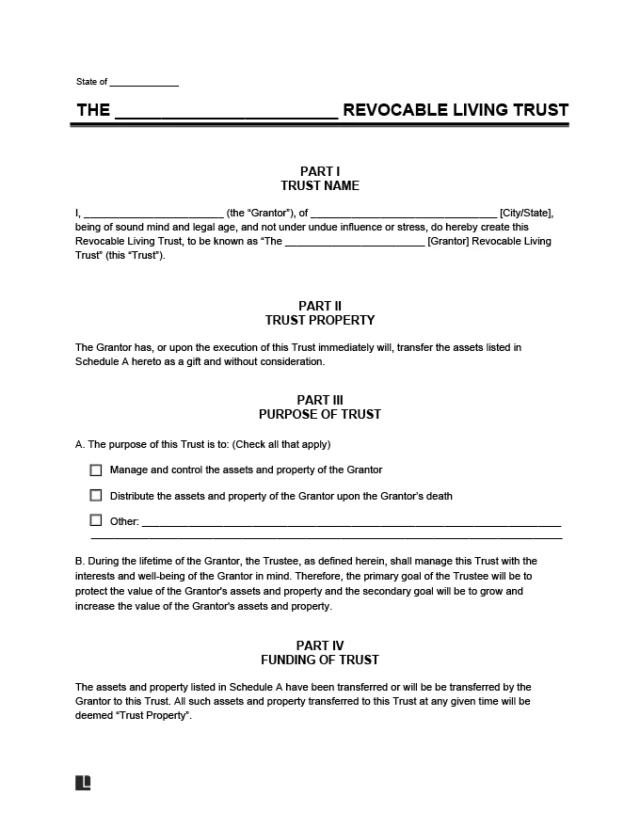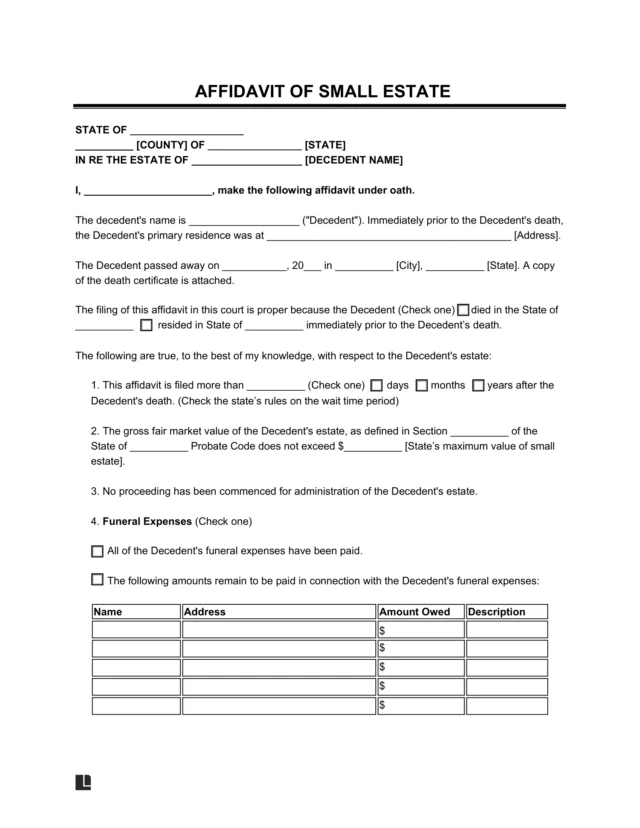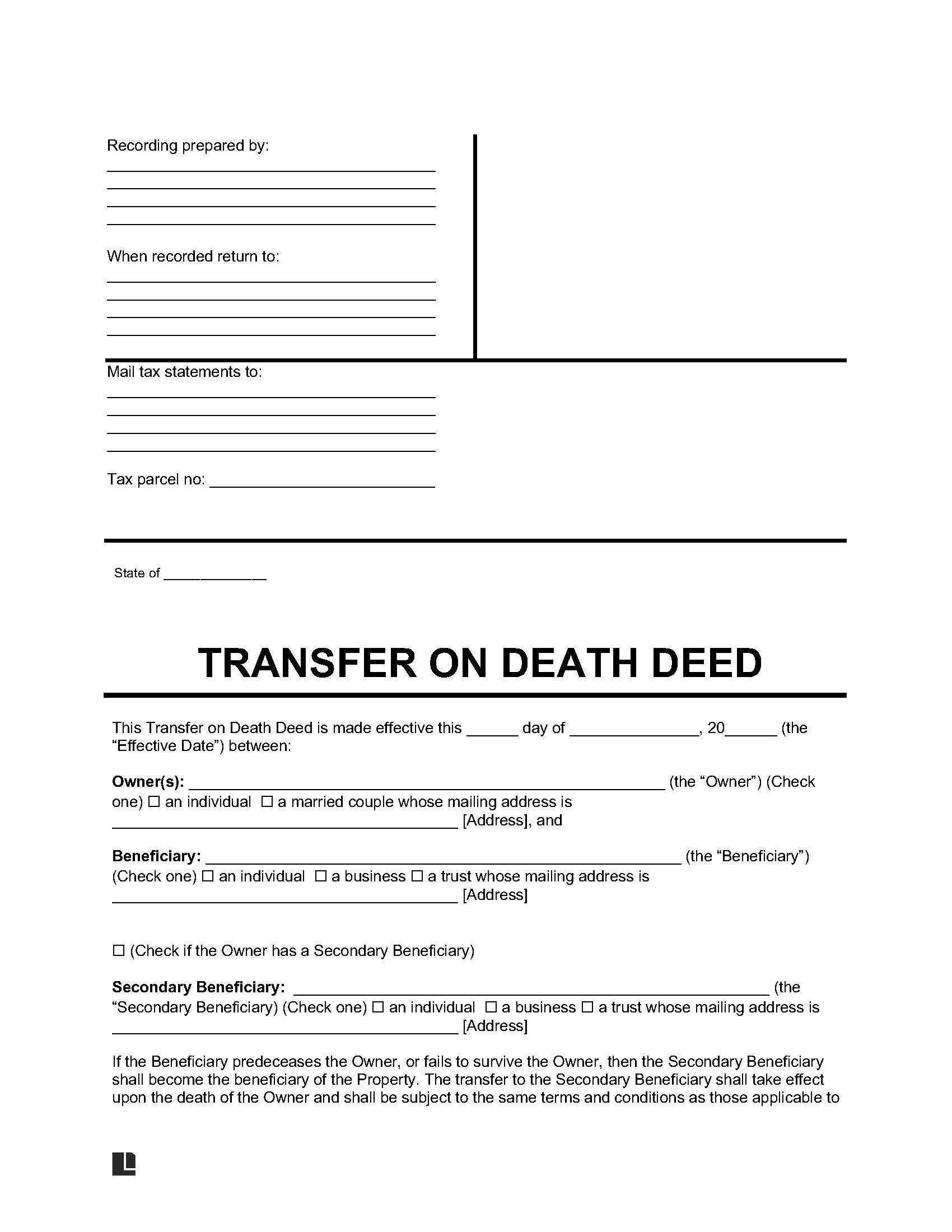What Is a Transfer on Death (TOD) Deed?
A transfer-on-death deed lets you pass your property to someone when you die, without going through probate. You can name a person or an organization, like a charity, as the beneficiary. If that beneficiary dies before you, you can list a backup.
Until your death, you keep full control of the property. The beneficiary has no rights to it while you’re alive. This type of deed is also known as a beneficiary deed.
Which States Allow Transfer on Death Deeds?
As of January 2023, 31 states and Washington, DC, allow transfer-on-death deeds for real estate. For example, if you’re completing a transfer on death deed in Texas or a transfer on death deed in California, make sure to follow the specific format and signing requirements for each state.
Since each state has its own process, it’s important to double-check the details before filing. Here are the states where transfer-on-death deeds are currently allowed.
| Alaska | Arizona | Arkansas | California | Colorado |
|---|---|---|---|---|
| DC | Hawaii | Illinois | Indiana | Kansas |
| Maine | Minnesota | Mississippi | Missouri | Montana |
| Nebraska | Nevada | New Mexico | North Dakota | Ohio** |
| Oklahoma | Oregon | South Dakota | Texas | Utah |
| Virginia | Washington | West Virginia | Wisconsin | Wyoming |
| Michigan* |
*A Ladybird Deed, once called an enhanced life estate, works in a similar way.
** Ohio has a TOD affidavit instead, but the effect is the same.
How to Fill out a Transfer of Death Deed Form
A transfer-on-death deed form has to be filled out with care. If you skip a step or get a name wrong, the county might reject it. In some cases, the transfer might not hold up later. Here’s how to complete each part properly so your plans go through without trouble.
1. Use a Template
To save time and avoid mistakes, start with a free transfer-on-death deed template from Legal Templates. It’s editable, lawyer-reviewed, and available in Word and PDF formats. You can customize it to fit your state’s rules.
2. Enter the Owner’s Info
Enter the property owner’s full legal name, followed by their current address. This confirms who owns the property and keeps the deed accurate. Make sure the name matches what’s on the title to avoid problems later.
3. Name the Deed Preparer
Include the name of the person preparing the deed. This could be the owner or a legal professional. It simply shows who filled out the form and helps keep the record clear.
4. Identify the Primary Beneficiary
Write the full legal name of the person who will receive the property after the owner’s death. Then add their current address. This names the primary beneficiary and keeps the record clear. Double-check the details to avoid any mix-ups later.
5. Add a Backup Beneficiary (Optional)
You can add a backup beneficiary in case the primary one passes away before the owner. This helps avoid delays or confusion later. It’s optional, but a good way to keep things clear. For example, if you name your sister as the primary beneficiary, you might list your brother as the backup.
6. Describe the Property
List the full property address, including the city and state. Then add the legal description from the current deed. This helps clearly identify the property being transferred. If there are any exceptions or restrictions, make sure to include those too.
7. Fill In Tax Info
Add any property tax information if your state asks for it. This might include the Assessor Parcel Number (APN) or tax ID. Check your local requirements to make sure you’ve covered everything.
8. Double-Check Everything
Make sure every detail is accurate before moving forward. Even small mistakes can cause delays or legal problems. Don’t forget to include the effective date, which is usually the owner’s death.
Don’t Skip Any Steps
In Krumrie v. Woodard, a man used a transfer-on-death deed to leave property to his son, but it broke a no-transfer clause in the contract. He didn’t get the sellers’ OK, so they were allowed to cancel the deal. Missing a detail like that can undo everything.
9. Sign in Front of a Notary (and Witnesses if Required)
The owner signs the deed in front of a notary, who checks their ID and watches them sign. This makes the deed official and helps prevent fraud. In some states, witnesses also need to sign. If that’s the case, include each witness’s full name and address. Check your state’s rules to know for sure.
10. Record the Deed
Once the deed is complete, file it with the county clerk or recorder’s office. This step makes the transfer official. Without it, the deed may not be legally valid.
Can a Transfer on Death Deed Be Contested?
Yes, a transfer-on-death deed can be contested in any state that allows them. Even though it skips probate, it’s not immune to legal challenges.
One of the common problems with transfer-on-death deeds is that heirs, creditors, or other interested parties can still bring the issue to probate court. They might claim fraud, undue influence, lack of mental capacity, or improper signing.
Transfer on Death Deed Sample
Take a look at the sample below. You can customize it with Legal Templates to fit your situation, then download a free printable transfer on death deed form as a Word or PDF file when you’re ready.







